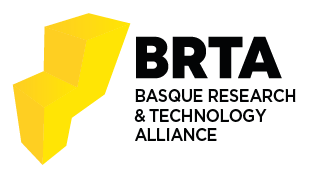A Cloud-Based AI Framework for Machine Learning Orchestration: A “Driving or Not-Driving” Case-Study for Self-Driving Cars
Egileak: Cristian Olariu Haytham Assem
Data: 09.06.2019
Abstract
Self-driving cars rely on a plethora of algorithms in order to perform safe driving manoeuvres. Training those models is expensive (e.g. hardware cost, storage, energy) and requires continuous updates. This paper proposes a cloud-based framework for continuous training of self-driving AI models. In addition to training standalone models, the framework is capable of leveraging pre-trained models in expediting the training on environment changes (e.g. new driver or new car model). As use-case, this paper focuses on a driver s behaviour while the vehicle s control is being transferred between the driver and the self-driving AI. A human driver can hand over the control of a vehicle s driving tasks to an automated system, when that system s confidence level is high enough. Reciprocally, there are situations where that control has to be handed back to the human driver. This paper proposes a novel real-time system for Driving Not-Driving (DND) detection, which is able to capture the ability of the driver to re-take control of a vehicle when the automated driving system transitions from a higher to a lower level of automation (e.g. L3 to L2 vehicle automation). We are using a computer vision-based Driver Monitoring System (DMS) that captures in real-time head and eye movements. These are captured in the car and transferred to the cloud where a DND model is trained for a specific driver. The DND classification model is deployed in the vehicle and predicts if the driver is ready or not to resume control at a given time. The cloud-based framework proposed in this paper shows an end-to-end cycle of collecting, training and deploying self-driving AI technology, with the additional features of continuous and transfer learning.
BIB_text
title = {A Cloud-Based AI Framework for Machine Learning Orchestration: A “Driving or Not-Driving” Case-Study for Self-Driving Cars},
keywds = {
Driver Monitoring, Cloud Computing
}
abstract = {
Self-driving cars rely on a plethora of algorithms in order to perform safe driving manoeuvres. Training those models is expensive (e.g. hardware cost, storage, energy) and requires continuous updates. This paper proposes a cloud-based framework for continuous training of self-driving AI models. In addition to training standalone models, the framework is capable of leveraging pre-trained models in expediting the training on environment changes (e.g. new driver or new car model). As use-case, this paper focuses on a driver s behaviour while the vehicle s control is being transferred between the driver and the self-driving AI. A human driver can hand over the control of a vehicle s driving tasks to an automated system, when that system s confidence level is high enough. Reciprocally, there are situations where that control has to be handed back to the human driver. This paper proposes a novel real-time system for Driving Not-Driving (DND) detection, which is able to capture the ability of the driver to re-take control of a vehicle when the automated driving system transitions from a higher to a lower level of automation (e.g. L3 to L2 vehicle automation). We are using a computer vision-based Driver Monitoring System (DMS) that captures in real-time head and eye movements. These are captured in the car and transferred to the cloud where a DND model is trained for a specific driver. The DND classification model is deployed in the vehicle and predicts if the driver is ready or not to resume control at a given time. The cloud-based framework proposed in this paper shows an end-to-end cycle of collecting, training and deploying self-driving AI technology, with the additional features of continuous and transfer learning.
}
isbn = {978-1-7281-0560-4},
date = {2019-06-09},
}







